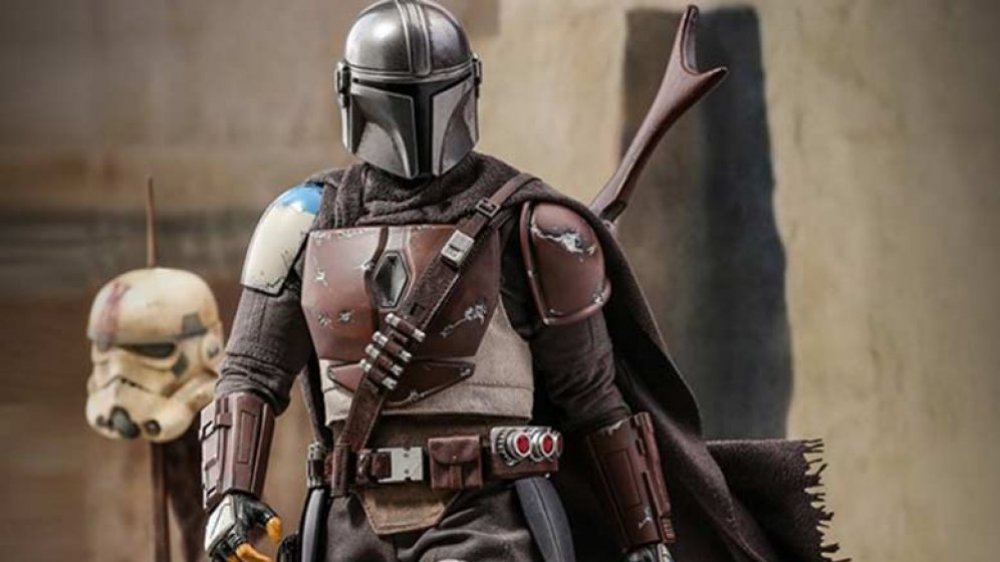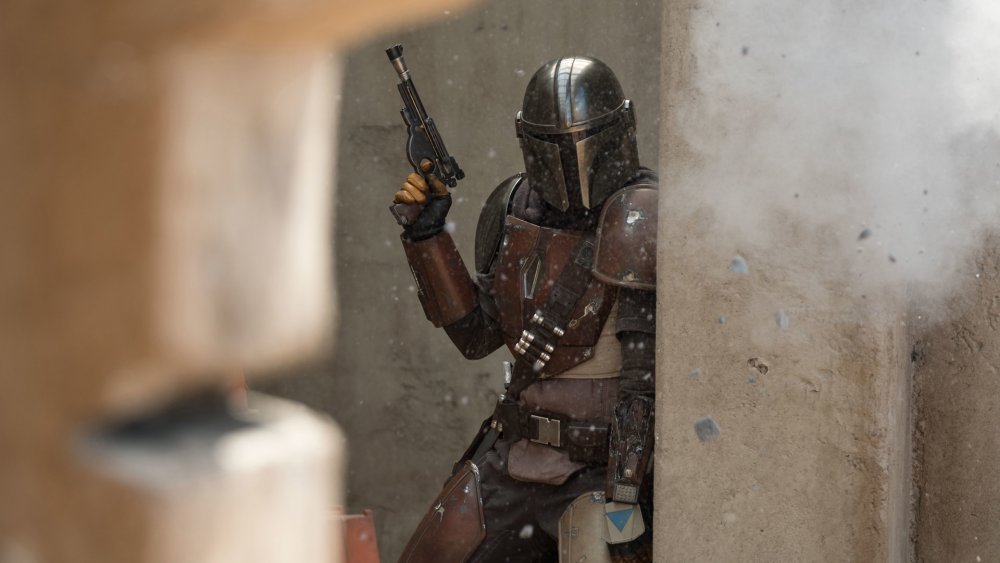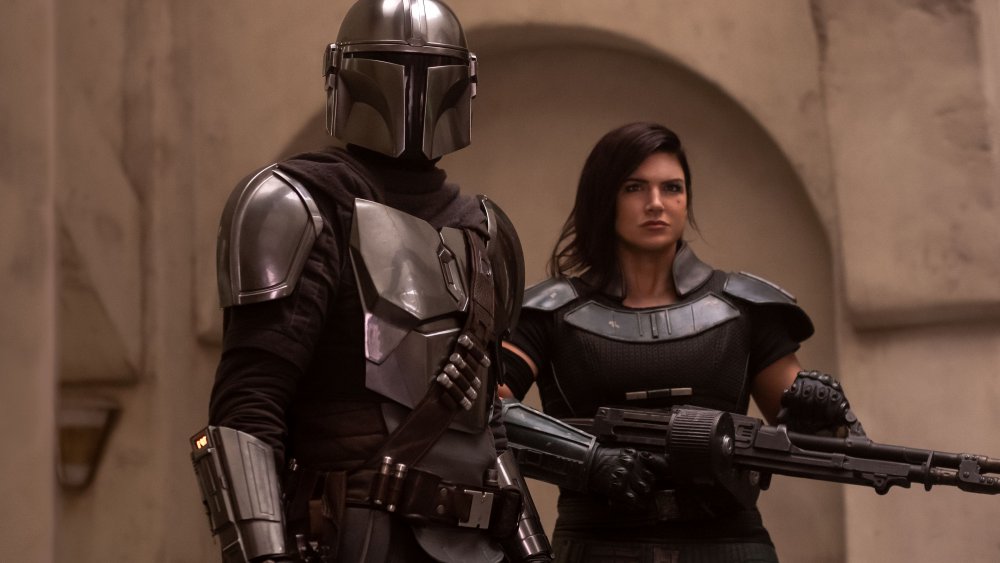The Truth About The Weapons Used In The Mandalorian
The Mandalorian stands out among the latter-day Star Wars franchise offerings for its sedate tone and narrative minimalism, compared to its theatrical cousins in the Skywalker Saga, sweeping epics engineered to be big, bombastic, crowd-pleasing action smorgasbords. There aren't a lot of characters and the story is very deliberately paced, so even the smallest change or detail is meant to be noticed. This is especially the case for the weapons utilized by its cast — each has a signature look meant to emphasize their characterizations, a stylistic tradition dating all the way back to the original 1977 Star Wars.
Mando gets a long gun with extra offensive accessories (like his neato zapping-fork) and a pistol — both are the tools of a man who must make do completely on his own, largely through stealth. Cara Dune wields a big ol' blaster akin to the Rock's Gatling gun ripped off of a helicopter in Furious 7, indicative of a brawny bruiser who knows how to handle herself in the chaos of man-to-man melee. Greef Karga has two teeny pistols each the size of a .22, never noticed until they're whipped out from underneath his coat with all the underhanded slyness of a corrupt club-owning gangster who must be prepared for every conversation to end in unexpected violence. This diversity of armaments brings out unspoken layers in these densely nuanced characters, so it's no surprise that a lot of care was put into their creation. Here's the background on The Mandalorian's arsenal, and why it's just as important as any other worldbuilding detail in Disney's era of Star Wars mythology.
The Mandalorian's weapons bring Star Wars back to basics
The documentary series Disney Gallery: The Mandalorian devoted an entire episode to the show's practical effects and prop work, which included a short explanation from prop master Josh Roth. Since The Mandalorian is pulling almost all of its background context and visual cues from the original trilogy — mostly from A New Hope — Roth explains that when tasked with dreaming up these characteristic weapons, he went back to the roots that George Lucas himself built on, and asked what inspired those original designs. The answer, as the veteran Star Wars fan might expect, is World War II. Production could only afford to rent vintage guns for the first movie, so designs were inherently hampered by the fact no modifications could be too permanent, as the designs were built directly onto the guns. That's why they sometimes appear bulky or oddly heavy in some shots — they were probably made quite unbalanced by the temporary additions.
For his task, Roth purchased WWII weapons — still very much available on the market in various states of repair — as his reference for illustrating concept weapons, adding stylized modifications on top of the general silhouettes of the real-world guns. Mando's sidearm looks very much like a German Luger, for example. Decades on and billions of dollars in generated revenue later, it's a paltry expenditure to mold your own weaponry, but it's the same conceptual process at work meant to achieve a very specific aesthetic — and, of course, look very cool.
Aesthetic as legacy
It's no secret that classic war movies and history in general were among Lucas' inspirations in creating the original concepts for Star Wars alongside producer Gary Kurtz. Pulp detective noir, with its shady men and sleek sidearms, was very much part of that DNA too. The weapons in both genres are performing a specific visual task beyond simply being the tool of a good guy — one look at a weapon should represent something as endemic to any character's existence as the tried-and-true trope of white hat versus black hat.
The particular documentary episode about the practical effects, which included discussion of miniature work and the puppetry used to animate the memetic Baby Yoda, tied these methods to a form of pastoral interest in protecting the creative assets that have been handed down from George Lucas to a new generation of filmmakers. Many of the roundtable discussions with the various people involved in production underlined the need to pick and choose from among the tools available to them — be it miniatures, VFX, or puppetry — not simply to look cool, but feel authentic to something they feel a debt of gratitude to. What any moment in Star Wars is supposed to feel like is very nebulous and hard to describe, but when achieved, it's instantly recognizable. It's part of what makes The Mandalorian so exciting for the future of Star Wars, and we can't wait for more in October of 2020.


